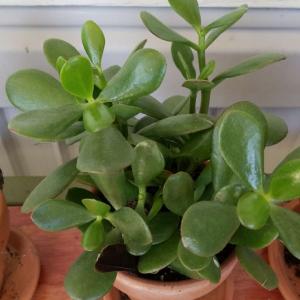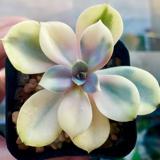文章
Dummer. ゛☀
2017年09月23日

Bringing home new plants from the nursery is one of life’s greatest joys for gardeners the world over, but when you’ve only just started in the garden, there are a lot of things that other gardeners assume you already know. They figure you know how to properly water, fertilize and care for your plants and neglect to point out these things that they find obvious – another often overlooked, yet valuable, bit of information can prevent your plants from turning white when the heat of the summer is bearing down.
What Does Plant Sunburn Look Like?
Plant leaves turning white is often the first, and sometimes the only sign of leaf sunscald in plants. You can think of this problem as plant sunburn damage and you won’t be far off from the truth. In a greenhouse, plants are exposed to high levels of filtered or artificial light, so they grow leaves that are good at soaking up those wavelengths. The problem with taking a plant straight from the greenhouse to your full sun garden is that they aren’t prepared for the extra UV rays they’re getting outside.
Just like you turn beet red if you forget the sunscreen on your first long day outside in spring, your plants can experience sun damage to what is essentially their skin. The outer layers of leaf tissue burn up with so much light exposure, causing light tan to white discoloration on the leaves and stems of tender plants. In some instances, established plantings can suffer from this as well, especially during an unexpected and extended heat wave (meaning more intense sunlight and UV rays). Vegetables and fruits can also suffer the same kind of sun damage if something causes your plants to suddenly defoliate, exposing fruits to excessive light.
How to Protect Plants from Sunburn
Sunscald injury of plants is easy to prevent, though there is no cure. Once leaves are damaged, all you can do is support the plant until it manages to grow new, stronger leaves. Slower acclimation to bright sun, known as hardening off, is vital to promoting sun resistant leaf development and preventing plant sunburn damage.
For plants already suffering, use a sunshade to restrict their exposure to UV light. Slowly give them more time each day with the sunshade removed until they are toughened up. This process can take about two weeks, at which time your plant should be ready for the sun. Make sure you properly water and feed plants with sunscald while they’re trying to recover — they’ll need all the support they can get.

What Does Plant Sunburn Look Like?
Plant leaves turning white is often the first, and sometimes the only sign of leaf sunscald in plants. You can think of this problem as plant sunburn damage and you won’t be far off from the truth. In a greenhouse, plants are exposed to high levels of filtered or artificial light, so they grow leaves that are good at soaking up those wavelengths. The problem with taking a plant straight from the greenhouse to your full sun garden is that they aren’t prepared for the extra UV rays they’re getting outside.

Just like you turn beet red if you forget the sunscreen on your first long day outside in spring, your plants can experience sun damage to what is essentially their skin. The outer layers of leaf tissue burn up with so much light exposure, causing light tan to white discoloration on the leaves and stems of tender plants. In some instances, established plantings can suffer from this as well, especially during an unexpected and extended heat wave (meaning more intense sunlight and UV rays). Vegetables and fruits can also suffer the same kind of sun damage if something causes your plants to suddenly defoliate, exposing fruits to excessive light.

How to Protect Plants from Sunburn
Sunscald injury of plants is easy to prevent, though there is no cure. Once leaves are damaged, all you can do is support the plant until it manages to grow new, stronger leaves. Slower acclimation to bright sun, known as hardening off, is vital to promoting sun resistant leaf development and preventing plant sunburn damage.

For plants already suffering, use a sunshade to restrict their exposure to UV light. Slowly give them more time each day with the sunshade removed until they are toughened up. This process can take about two weeks, at which time your plant should be ready for the sun. Make sure you properly water and feed plants with sunscald while they’re trying to recover — they’ll need all the support they can get.
0
0
文章
Dummer. ゛☀
2017年09月23日

Some succulents make your propagation work easier by forming new plants mostly on their own. Some leaf succulents develop roots on their stems while still attached to the mother plant, and sometimes leaves fall off succulents and root by themselves. Still others develop new rooted plantlets at their bases. For such plants, minimal effort is needed on the part of the gardener.
Root-Forming Stems
Many members of the Crassulaceae family grow prominent aerial roots along branch stems. If the branch bends over sufficiently to contact the soil, the branch roots into the ground at the point of contact. All you need to do is to cut the connection with the mother plant, dig the new plantlet up and give it a pot of its own. Some examples are Red Echeveria (Echeveria harmsii), Crinkle Leaf Plant (Adromischus cristatus), Pinwheel Plant (Aeonium haworthii) and many Kalanchoes. These plants all grow in U.S. Department of Agriculture plant hardiness zones 10 and 11 and can be grown as houseplants anywhere.
Leaf Propagation
Another characteristic of many Crassulaceae family plants is the ability to grow an entire new plant from one leaf. Jelly Bean Plant (Sedum rubrotinctum) grows about 6 inches (15 cm) tall with sprawling branches that root as they go. Leaves are plump, reddish-green and the shape of a jelly bean. They turn bright red in winter. If a leaf falls from the plant, it grows a new plant from its basal end. Jade plant (Crassula ovata) does the same thing. Mother-of-millions (Kalanchoe x houghtonii) produces plantlets along the leaf margins, each of which grows into a new plant. It is so successful that in areas of Australia where it is hardy, it can become a noxious weed. These three plants are hardy in USDA zones 10 and 11.
Division
Succulent plants that form basal rosettes like Aloe and Haworthia produce new plants from the base of the mother plant. For a while, the plant remains attached to the parent plant, but as new offsets form, the outer plantlets, already with roots of their own, become disconnected from the parent. You can periodically unpot the plant, remove these independent little offsets and give them a pot of their own. Aloes grow in USDA zones 9 through 11, depending on the species, and Haworthias are hardy in USDA zone 11.
Bulbils and Tubers
Pregnant Onion Plant (Ornithogalum caudatum), a member of the Lily family, is a stem succulent that produces a large, pale-green above-ground bulb with a papery white covering. When the plant is 2 to 3 years old, it starts to produce little bulbils here and there on the bulb under the papery covering. They eventually get big enough to break through the covering and can fall to the ground, growing roots and forming a new plant. You can also break them off when they are growing their own leaves and put them on potting soil to root. Pregnant Onion is hardy in USDA zones 9 through 11. String of Hearts (Ceropegia woodii) forms little round tubers along its stems. Lay a stem with tubers along potting soil, and the tubers will root into the soil. Disconnect the rooted stem from the mother plant to make an independent plant. String of Hearts is hardy in USDA zone 10.

Root-Forming Stems
Many members of the Crassulaceae family grow prominent aerial roots along branch stems. If the branch bends over sufficiently to contact the soil, the branch roots into the ground at the point of contact. All you need to do is to cut the connection with the mother plant, dig the new plantlet up and give it a pot of its own. Some examples are Red Echeveria (Echeveria harmsii), Crinkle Leaf Plant (Adromischus cristatus), Pinwheel Plant (Aeonium haworthii) and many Kalanchoes. These plants all grow in U.S. Department of Agriculture plant hardiness zones 10 and 11 and can be grown as houseplants anywhere.

Leaf Propagation
Another characteristic of many Crassulaceae family plants is the ability to grow an entire new plant from one leaf. Jelly Bean Plant (Sedum rubrotinctum) grows about 6 inches (15 cm) tall with sprawling branches that root as they go. Leaves are plump, reddish-green and the shape of a jelly bean. They turn bright red in winter. If a leaf falls from the plant, it grows a new plant from its basal end. Jade plant (Crassula ovata) does the same thing. Mother-of-millions (Kalanchoe x houghtonii) produces plantlets along the leaf margins, each of which grows into a new plant. It is so successful that in areas of Australia where it is hardy, it can become a noxious weed. These three plants are hardy in USDA zones 10 and 11.

Division
Succulent plants that form basal rosettes like Aloe and Haworthia produce new plants from the base of the mother plant. For a while, the plant remains attached to the parent plant, but as new offsets form, the outer plantlets, already with roots of their own, become disconnected from the parent. You can periodically unpot the plant, remove these independent little offsets and give them a pot of their own. Aloes grow in USDA zones 9 through 11, depending on the species, and Haworthias are hardy in USDA zone 11.

Bulbils and Tubers
Pregnant Onion Plant (Ornithogalum caudatum), a member of the Lily family, is a stem succulent that produces a large, pale-green above-ground bulb with a papery white covering. When the plant is 2 to 3 years old, it starts to produce little bulbils here and there on the bulb under the papery covering. They eventually get big enough to break through the covering and can fall to the ground, growing roots and forming a new plant. You can also break them off when they are growing their own leaves and put them on potting soil to root. Pregnant Onion is hardy in USDA zones 9 through 11. String of Hearts (Ceropegia woodii) forms little round tubers along its stems. Lay a stem with tubers along potting soil, and the tubers will root into the soil. Disconnect the rooted stem from the mother plant to make an independent plant. String of Hearts is hardy in USDA zone 10.

0
0
succsucculents
2017年09月23日

new to the app!! anyone have ID on these three??


0
0
succsucculents:@meriunkat thank you so much!!
meriunkat:and top are Crassula Tretagona
meriunkat:the*
meriunkat:I he bottom right looks like Kalanchoe Tomentosa "panda plant"
meriunkat:Welcome!




















